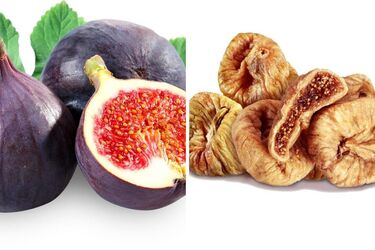Healthy figs: why such an important product is underestimated in our country

BLOG
Since ancient times, figs have been associated with health and prosperity. Its fruits are symbolically associated with Demeter, the ancient Greek goddess of agriculture and fertility. The Romans considered figs to be a gift from Bacchus, the god of wine and everything sensual, and called the fruit a wine berry.
The fig fruit is a set of inverted flowers that, if left untouched, will bloom from the inside. Fig trees typically grow in the Mediterranean and the Middle East, places where it is hot, sunny, and dry for most of the year.
Before sugar became popular, figs were often used to sweeten desserts. Today, as people begin to move away from added sugar, many are turning to figs as a healthier alternative.
Figs satisfy cravings for sweets. Research results also show its good potential for beneficial effects on human health.
Helps reduce high blood pressure
Hypertension can lead to complications such as heart disease and stroke. One of the factors that causes high blood pressure is an imbalance of the key minerals potassium/sodium. It is caused by consuming too much sodium and not enough potassium.
Figs are rich in potassium and can correct this imbalance. The high fiber content in figs will help to remove excess sodium from the body.
Improves digestion and intestinal transit
Digestive problems can be manifested by impaired intestinal transit and bowel movements from constipation to diarrhea. In both cases, increasing fiber intake, which is abundant in figs, helps. In addition, these fruits are an excellent source of prebiotics, which improve the composition of intestinal bacteria and the functional state of the intestines.
Increase bone density
Figs are a good source of both potassium and calcium. These minerals can work together to improve bone density and prevent diseases such as osteoporosis.
Studies show that a diet rich in potassium can improve bone health. Calcium is a key structural component of bones. Increasing calcium intake improves bone mineral structure in children and adolescents.
NUTRITIONAL VALUE
One of the main benefits of figs is that they do not contain unwanted nutrients such as unhealthy fats. Instead, they are a great source of vitamins A and C, calcium, iron, potassium, and magnesium.
One medium fruit contains 37 calories, 0.5 mg of sodium, 10 grams of carbohydrates, 1.45 grams of fiber, and 8 grams of sugar.
HOW MUCH AND HOW TO EAT
Although figs are healthy in moderation, it is important to remember that the recommended serving size is one medium fig. Limit yourself to keep your overall sugar intake lower.
Figs can be conveniently eaten fresh on their own or added to a salad or sandwich for crunch and flavor. There are also several ways to use figs in baked goods as a sweetener. For example, finely chop them and mix them into the dough like raisins when making bread, cookies, or muffins.
Figs can be used to make a delicious dessert: season a fig fruit cut lengthwise with honey and cinnamon, and then bake in the oven for 40 minutes.

